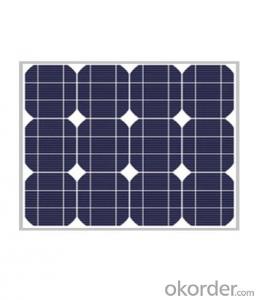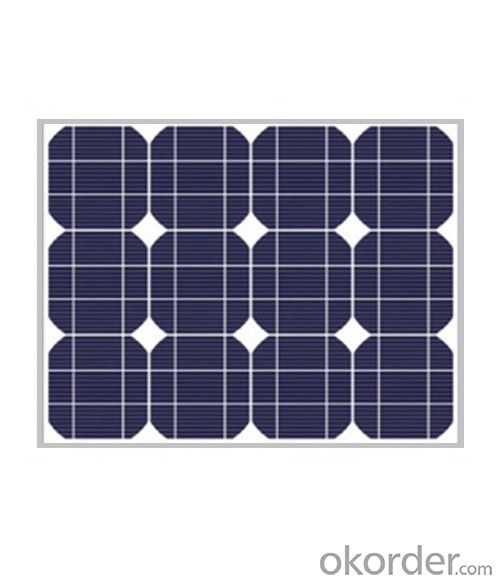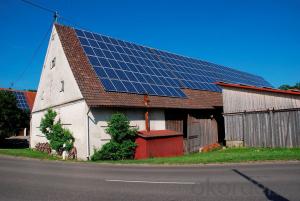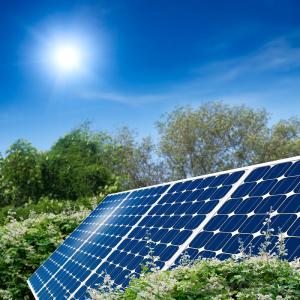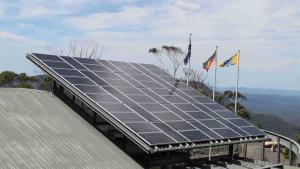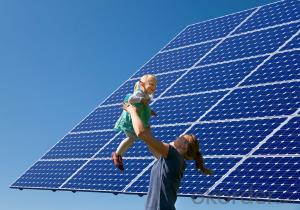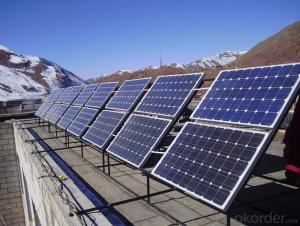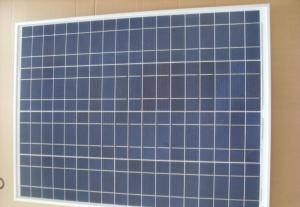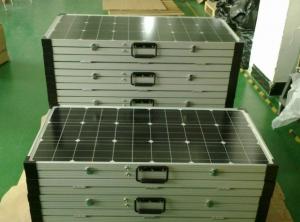Moxie Solar Panels Monocrystalline Silicon Solar Module 20w
- Loading Port:
- Shanghai
- Payment Terms:
- TT OR LC
- Min Order Qty:
- 10000 watt
- Supply Capability:
- 1000000 watt/month
OKorder Service Pledge
OKorder Financial Service
You Might Also Like
Specification
Product Description

Monocrystalline Silicon Solar Module 20W
Product Description
High efficiency and good workmanship
excellent in quality and reasonable in price
High transmission rate,low iron and tempered glass
solar panel have high wind,easy installation and long life.
Life time:20-25 years
Tempered glass laminated with aluminum frame
Specifications for Mono-crystalline Silicon Solar Module with 20W Maximum Power
| Mechanical Characteristics | |
| Cell type | mono-crystalline silicon solar cells |
| Cell layout | 2*18 |
| Number of cells | 36pcs |
| Module dimensions | 627*281*25mm |
| Frame | anodized aluminum,grey or black |
| Junction box | IP65 |
| Connectors | MC4 or MC4 compatible(optional) |
| Net weight | 2.20kg |
| Packing | 10pcs/ctn |
| Electrical Characteristics | |
| Peak power(Pmax) | 20W |
| Power tolerance | ±3% |
| Max.system voltage | 715VDC |
| Open circuit voltage(Voc) | 21.5V |
| Short circuit current(Isc) | 1.27A |
| Max.power voltage(Vmp) | 17.5V |
| Max.power current(Imp) | 1.14A |
| Temperature coefficients of Isc | 0.035%/ºC |
| Temperature coefficients of Voc | -0.33%/ºC |
| Temperature coefficients of Pmax | -0.43%/ºC |
| Cell Efficiency | ≥17% |
| FF | 73% |
| Standard Test Condition(STD) | Irradiance:1000W/m²;Cell temperature:25ºC;AM:1.5 |
Features:
1) High reliability with guaranteed +/-3% output power tolerance
2) The modules can withstand high wind-pressure, snow loads and extreme temperatures
3) Bypass diodes to minimize power loss with shading
4) High and stable conversion efficiency to ensure the highest quality
Quality and Safety
1) Industry leading power output warranty, 25 year 80%, 10 year 90% power warranty and 3 year power warranty
2) ISO9001: 2008 (Quality Management system) certified factory
3) Product Quality warranty & products Liability Insurance to guarantee and user' benefits
EN 6100-6-3: 2007 EN 6100-3-1: 2007(IEC 61000-4-2: 2008
Our advantages:
High quality materials: High insulation TPT, Anti-aging EVA
Focus on each process during manufacture
Experienced engineers and workers
Fast delivery: 7-15 DAYS High efficiency and long time warranty
- Q: Do solar panels require maintenance?
- Yes, solar panels do require some maintenance. Regular cleaning to remove dirt, dust, and debris is recommended to ensure optimal performance. Additionally, occasional inspections and maintenance checks by professionals are advisable to detect and address any issues or damage that may arise over time.
- Q: I am researching several solar panels to install in my house. I would like to use a 40 watt panel to connect, through a solar battery controller, to a battery or two. I would then like to use the solar panel (40 watts) to charge the battery(ies) for emergency use. Once charged, and when needed, I would like to use the battery(ies), 2 volt deep cycle, to power several LED lamps. Since I am new to solar power I had several questions...Is a 40 watt panel strong/large enough to charge a 2 volt deep cycle battery or two?How long would it take to charge one of these batteries?What would be the expected cost to purchase necessary supplies? (With the solar panel, battery controller, and MC4 cabling I've found I have an expected cost of roughly $00.00 with batteries)Would this be difficult for someone with little experience in this field?
- Whats the size of battery ? The time needed for your 40Watts panel to fully charge a battery depends on the size of battery. Usually battery size is mentioned in Amp-Hours (AH).
- Q: Can solar panels be used for charging electric bikes?
- Yes, solar panels can be used to charge electric bikes. By converting sunlight into electricity, solar panels can provide a clean and renewable source of power for charging the batteries of electric bikes. This allows for sustainable and eco-friendly transportation options.
- Q: Can solar panels be used for powering electric fences?
- Yes, solar panels can be used to power electric fences. Solar panels can generate electricity that can be stored in batteries and used to power electric fence systems, providing a reliable and eco-friendly source of energy for the fences.
- Q: Can solar panels be installed on art installations or sculptures?
- Yes, solar panels can be installed on art installations or sculptures. In fact, incorporating solar panels into art installations or sculptures is becoming increasingly popular as it allows for the generation of clean and renewable energy while adding an aesthetic and functional element to the artwork.
- Q: Can solar panels be installed on concert venues or music festivals?
- Yes, solar panels can be installed on concert venues or music festivals. In fact, many venues and festivals are increasingly adopting solar power as a sustainable and renewable energy source. Solar panels can be installed on roofs, canopies, or even on the ground surrounding the venue, providing clean energy to power the event and reduce its carbon footprint.
- Q: How do solar panels withstand hail or other weather conditions?
- Solar panels are designed to be durable and can withstand hail and other weather conditions due to their sturdy construction and protective materials. The panels are made with tempered glass, which is highly resistant to impacts, including hail. Additionally, the panels are built to withstand high winds, heavy snow loads, and extreme temperatures. This ensures that they can endure harsh weather conditions without being damaged, allowing them to continue generating electricity efficiently.
- Q: They have been around long enough to be cheaper. Unless they are made out of a natural material that is rare and hard to find, there is no reason why they should be so expensive. On another note, I think that all low power devices like cell phones and even laptops should have solar panels. Even if it is not enough to fully power the device for a long period of time, it will provide some electricity savings and with millions of people saving a little power adds up.
- Photo okorder /... Notice it costs over $200 and it takes up a sizable amount of space. Plus you have to expose it to bright sun light. Over all this is not something the average consumer wants to spend money on or fuss with. If something is expensive, difficult or inconvenient to use then people won't use it. Just the basic economics of such a device limits its sales never mind its functionality and usability. Even if you made a small one buit into the cover to extend the battery you won't get much of an extension and you will increase the cost of your laptop. Consider how people shop, will they buy the more expensive laptop for a questionable amount of battery extension? Mass production can lower costs but in order to mass produce something you need a demand that will consume what you produce. But if no one wants the item because of the aforementioned issues than you can't justify mass producing the item. This is like the classic which came first Chicken or Egg problem, one doesn't happen without the other. Cost reduction doesn't happen without consumer demand. This is where tax incentives, subsidies, low cost loans and energy buyback contracts come into play in order to spur on demand and jump start mass production. You could also make electricity extremely expensive by taxing oil and carbon so that a Solar Cell becomes economically competitive to very expensive electricity. Problem with this option is the negative impact high energy costs have on economic activity. Just look at what happened a couple of summers ago when gas hit $4/gal. To spur on demand we need to incentives the use of Solar cells (and other alternative energy). This can be done through several means such as subsidies, tax incentives, low interest loans, energy buyback contracts etc...
- Q: If my school was to purchase enough solar panels to run the school off only their power, how much might that cost? (I have a really small school, only 384 kids.)Just general prices of solar panels and how much electricity they yield would be fine too.
- I don't know the square of your school. generally the solar panel is 0.6$ per watt. so if 5kilowatt can meet your demand the cost will be3000$.
- Q: Can solar panels be used to power a skyscraper?
- Yes, solar panels can be used to power a skyscraper. With advancements in solar technology, larger and more efficient panels can be installed on rooftops or facades of skyscrapers, harnessing sunlight to generate electricity. However, the power generated may not be sufficient to fully meet the energy demands of a skyscraper, so a combination of solar power with other renewable sources or traditional energy grids might be needed.
Send your message to us
Moxie Solar Panels Monocrystalline Silicon Solar Module 20w
- Loading Port:
- Shanghai
- Payment Terms:
- TT OR LC
- Min Order Qty:
- 10000 watt
- Supply Capability:
- 1000000 watt/month
OKorder Service Pledge
OKorder Financial Service
Similar products
Hot products
Hot Searches
Related keywords
